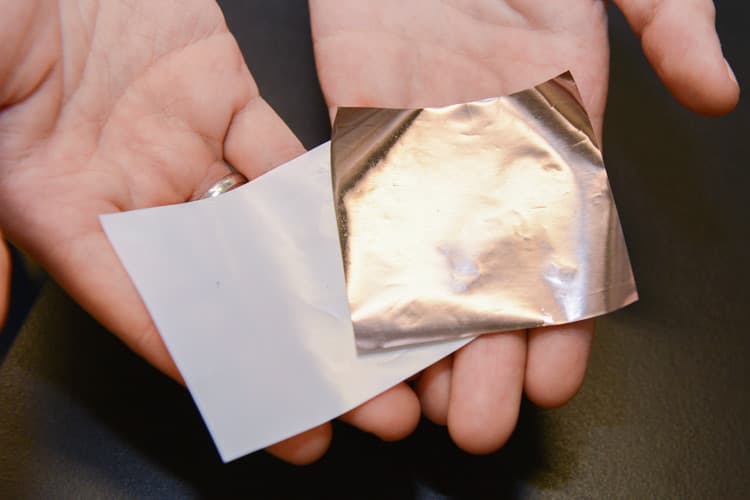Stanford's Smart Li-Ion Battery Warns You If There Are Chances Of Overheating
Millions of users across the world use the Lithium-Ion (Li-Ion) battery in their phones, laptops and tablets. The problem of batteries getting overheated is a common one and pose great risk for our mobile devices. We've all witnessed in 2006 that Sony Corp had to recall thousands of li-ion batteries when news about multiple laptops catching fire surfaced. A team of researchers from Stanford University seem to have come to a good solution for this. The Smart Li-Ion Battery is the answer to this problem. Yi Cui, an associate professor of materials science and engineering along with his team has developed a smart battery that gives the user a 'warning' when it is about to start overheating, avoiding the possibility of the device bursting into flames.
In their efforts to lower the risk of batteries blowing up into frames, the team studied what was wrong with standard Li-Ion batteries. A typical battery has 2 closely placed electrodes (one of them a carbon anode and the other a lithium metal-oxide cathode) with only an ultra-thin polymer to act as a separator between them. If this separator is somehow damaged, the battery could short-circuit and set the flammable electrolyte solution on fire. Once the problem was identified, the team thought of building a smart separator that is able to detect the short-circuit before the dendrites are able to reach the cathode. By using a nano-layer of copper onto one side of a polymer separator, the team could create a 3rd new electrode located in between the anode and the cathode.

The ultra-thin copper sensor that is deposited
on the conventional battery separator (white square)
The team used this copper layer to measure the difference in voltage between the anode & the separator. If the dendrites start reaching the copper coating, the voltage drops to zero. This data can be used to warn the user to remove the battery to avoid any chances of overheating. Imagine getting a pop-up on your laptop screen saying that the battery needs to be immediately replaced. This gives the user plenty of lead time to take due course of action to avoid unnecessary damage to his device.
Moreover, it has also come to light that by measuring electrical resistance between the cathode & the separator, it is possible to locate the exact location where the dendrites had punctured the copper conductor. If you are concerned about the effect that this smart separator could've on the battery's performance, the team offers a cherry on the cake saying, "Th Polymer separator is only 50 nm thick (which is 500x thinner than the separator)." and does not hamper the flow of lithium ions between the electrodes .
Most compact electronics devices we know use Li-Ion batteries, but going forward we might find this more useful in the electric cars as well as on-board electronics on airplanes. Furthermore, the same technology of giving out warnings can also be applied in zinc, aluminum and other metal batteries.
What are your thoughts on the new smart Li-Ion batteries? Share with us in comments below.
Source: #-Link-Snipped-#
In their efforts to lower the risk of batteries blowing up into frames, the team studied what was wrong with standard Li-Ion batteries. A typical battery has 2 closely placed electrodes (one of them a carbon anode and the other a lithium metal-oxide cathode) with only an ultra-thin polymer to act as a separator between them. If this separator is somehow damaged, the battery could short-circuit and set the flammable electrolyte solution on fire. Once the problem was identified, the team thought of building a smart separator that is able to detect the short-circuit before the dendrites are able to reach the cathode. By using a nano-layer of copper onto one side of a polymer separator, the team could create a 3rd new electrode located in between the anode and the cathode.

The ultra-thin copper sensor that is deposited
on the conventional battery separator (white square)
Moreover, it has also come to light that by measuring electrical resistance between the cathode & the separator, it is possible to locate the exact location where the dendrites had punctured the copper conductor. If you are concerned about the effect that this smart separator could've on the battery's performance, the team offers a cherry on the cake saying, "Th Polymer separator is only 50 nm thick (which is 500x thinner than the separator)." and does not hamper the flow of lithium ions between the electrodes .
Most compact electronics devices we know use Li-Ion batteries, but going forward we might find this more useful in the electric cars as well as on-board electronics on airplanes. Furthermore, the same technology of giving out warnings can also be applied in zinc, aluminum and other metal batteries.
What are your thoughts on the new smart Li-Ion batteries? Share with us in comments below.
Source: #-Link-Snipped-#
0

